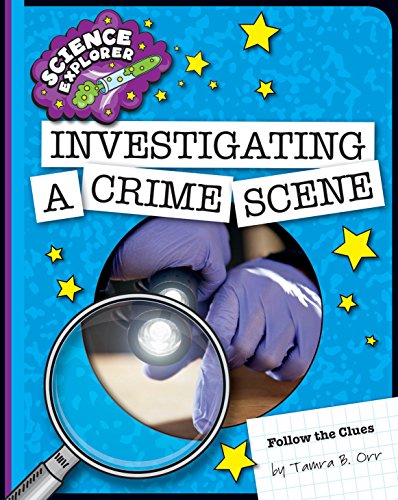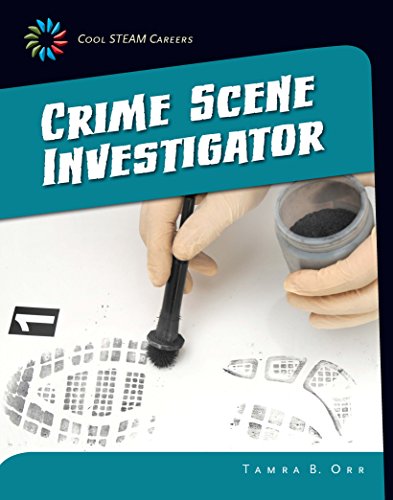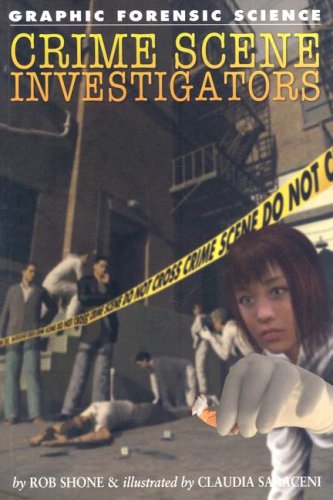-
Investigating a Crime Scene
Tamra B. Orr
eBook (Cherry Lake Publishing, Dec. 13, 2013)The ability to use the scientific method is key to carrying out experiments, taking measurements, or performing technical tasks. In this book, readers in real-world situations are tasked with following clues and using the scientific method to find out what happens during a crime scene investigation. Informational text presents evidence and facts in the form of clues and side-bar details to help children develop critical thinking skills. A summary of the situation is included to show how each chapter contributes to the whole and for a solid understanding of the topic.
-
Investigating a Crime Scene
Tamra B Orr
Paperback (Cherry Lake Pub, Jan. 1, 2014)The ability to use the scientific method is key to carrying out experiments, taking measurements, or performing technical tasks. In this book, readers in real-world situations are tasked with following clues and using the scientific method to find out what happens during a crime scene investigation. Informational text presents evidence and facts in the form of clues and side-bar details to help children develop critical thinking skills. A summary of the situation is included to show how each chapter contributes to the whole and for a solid understanding of the topic. Y
Y
-
Investigating a Crime Scene
Tamra B Orr
Library Binding (Cherry Lake Publishing, Jan. 1, 2014)The ability to use the scientific method is key to carrying out experiments, taking measurements, or performing technical tasks. In this book, readers in real-world situations are tasked with following clues and using the scientific method to find out what happens during a crime scene investigation. Informational text presents evidence and facts in the form of clues and side-bar details to help children develop critical thinking skills. A summary of the situation is included to show how each chapter contributes to the whole and for a solid understanding of the topic. Y
Y
-
Crime Scene Investigator
Tamra B. Orr
language (Cherry Lake Publishing, Sept. 15, 2015)Readers will learn what it takes to succeed as a crime scene investigator. The book also explains the necessary educational steps, useful character traits, potential hazards, and daily job tasks related to this career. Sidebars include thought-provoking trivia. Questions in the backmatter ask for text-dependent analysis. Photos, a glossary, and additional resources are included.
-
Investigating a Crime Scene
Lorraine Jean Hopping
Paperback (Gareth Stevens Pub Secondary Lib, Jan. 12, 2007)Explains what a crime scene is, describes what may be considered evidence in a criminal investigation and how it is collected, and discusses cases in which forensic evidence was used to help convict or clear a suspect. X
X
-
Investigating a Crime Scene
Lorraine Jean Hopping
Library Binding (Gareth Stevens Pub Secondary Lib, Jan. 12, 2007)Explains what a crime scene is, describes what may be considered evidence in a criminal investigation and how it is collected, and discusses cases in which forensic evidence was used to help convict or clear a suspect. Z
Z
-
Crime Scene Investigation
Colin Evans, Consulting Editor John L. F Colin Evans
language (Chelsea House Publications, Feb. 1, 2009)This title details the emergence of modern crime-fighting techniques from the mid-1800s to the present, focusing on how crime scenes are treated, how evidence is processed, and how evidence is used in court to build a case for conviction.
-
Crime Scene Investigators
Rob Shone, Claudia Saraceni
Paperback (Rosen Publishing Group, Jan. 1, 2008)Describes how crime scene investigators use physical evidence at a crime scene to help determine details of the crime, and includes three case studies in graphic novel format that were aided by these investigators.
-
Crime Scene Investigator
Geoffrey M. Horn
Paperback (Gareth Stevens Pub Hi-Lo Must reads, Jan. 1, 2008)Describes the kinds of work that crime scene investigators do and provides information on the techniques of forensic science. X
X
-
Crime Scene Investigator
Tamra B. Orr
language (Cherry Lake Publishing, Dec. 10, 2013)This high-profile career is described, including job tasks, expectations, and educational and personal preparation.
-
To Be a Crime Scene Investigator
Henry M. Holden
eBook (Zenith Press, Sept. 15, 2006)If the devil’s in the details, then the crime scene investigator’s got him:conducting searches, collecting evidence, photographing, scrutinizing, analyzingpursuing the culprit right down to the last scrap of proof. Whether you’d like to become a crime scene investigator or simply want to see what it takes, look no further than this book.Like a top-notch forensics expert, author Henry M. Holden traces the path that crime scene investigators follow as they learn and ply their trade. His behind-the-scenes look takes us from application to training, crime scene to lab, revealing the fine points of securing, examining, and processing evidence; identifying victims, and reenacting the crime; conducting police lineups and interviews, and administering polygraphs; and forensics and evidence analysis.
-
To Be a Crime Scene Investigator
Henry M. Holden
Paperback (Zenith Press, Sept. 15, 2006)If the devil’s in the details, then the crime scene investigator’s got him: conducting searches, collecting evidence, photographing, scrutinizing, analyzingpursuing the culprit right down to the last scrap of proof. Whether you’d like to become a crime scene investigator or simply want to see what it takes, look no further than this book. Like a top-notch forensics expert, author Henry M. Holden traces the path that crime scene investigators follow as they learn and ply their trade. His behind-the-scenes look takes us from application to training, crime scene to lab, revealing the fine points of securing, examining, and processing evidence; identifying victims, and reenacting the crime; conducting police lineups and interviews, and administering polygraphs; and forensics and evidence analysis.